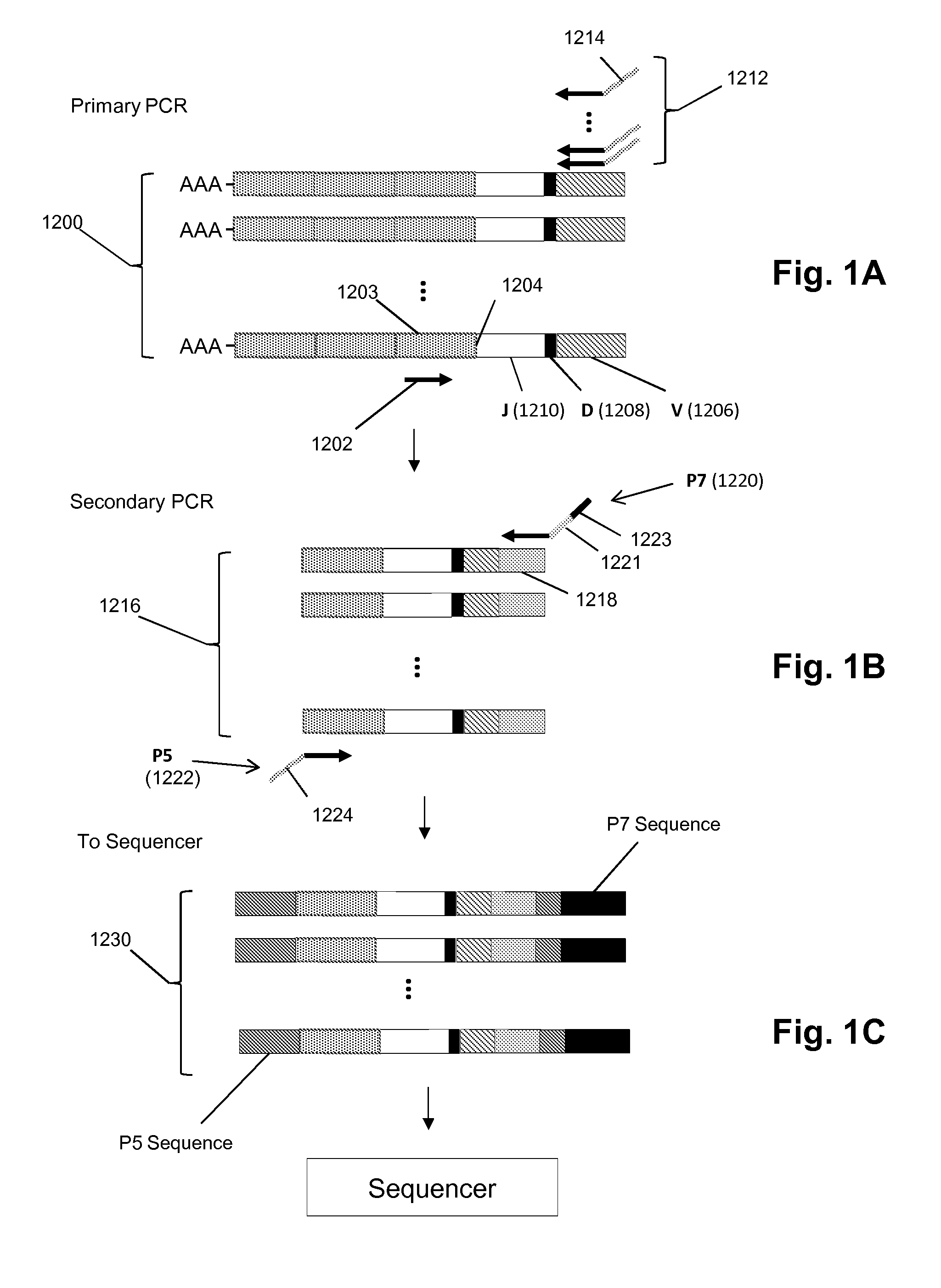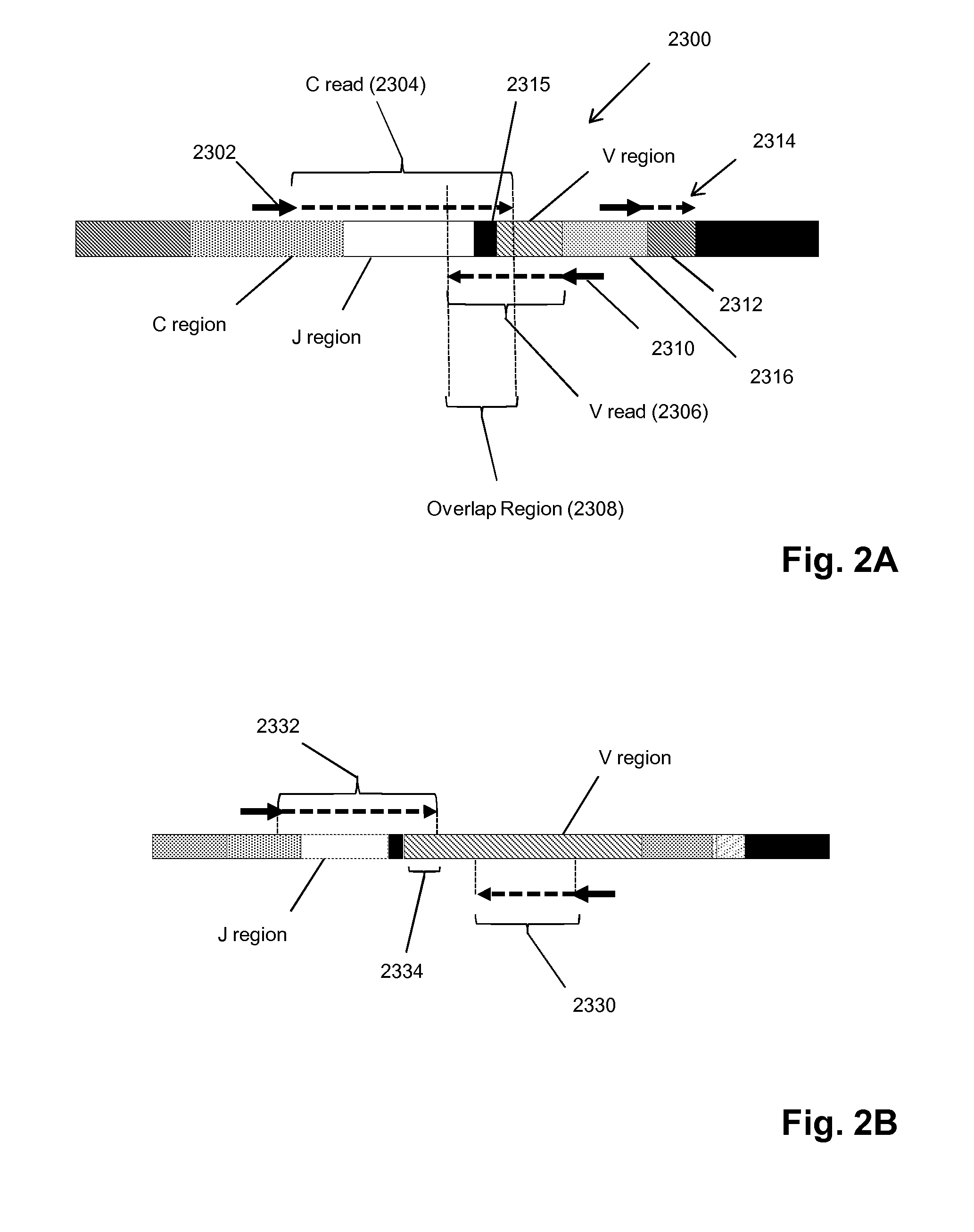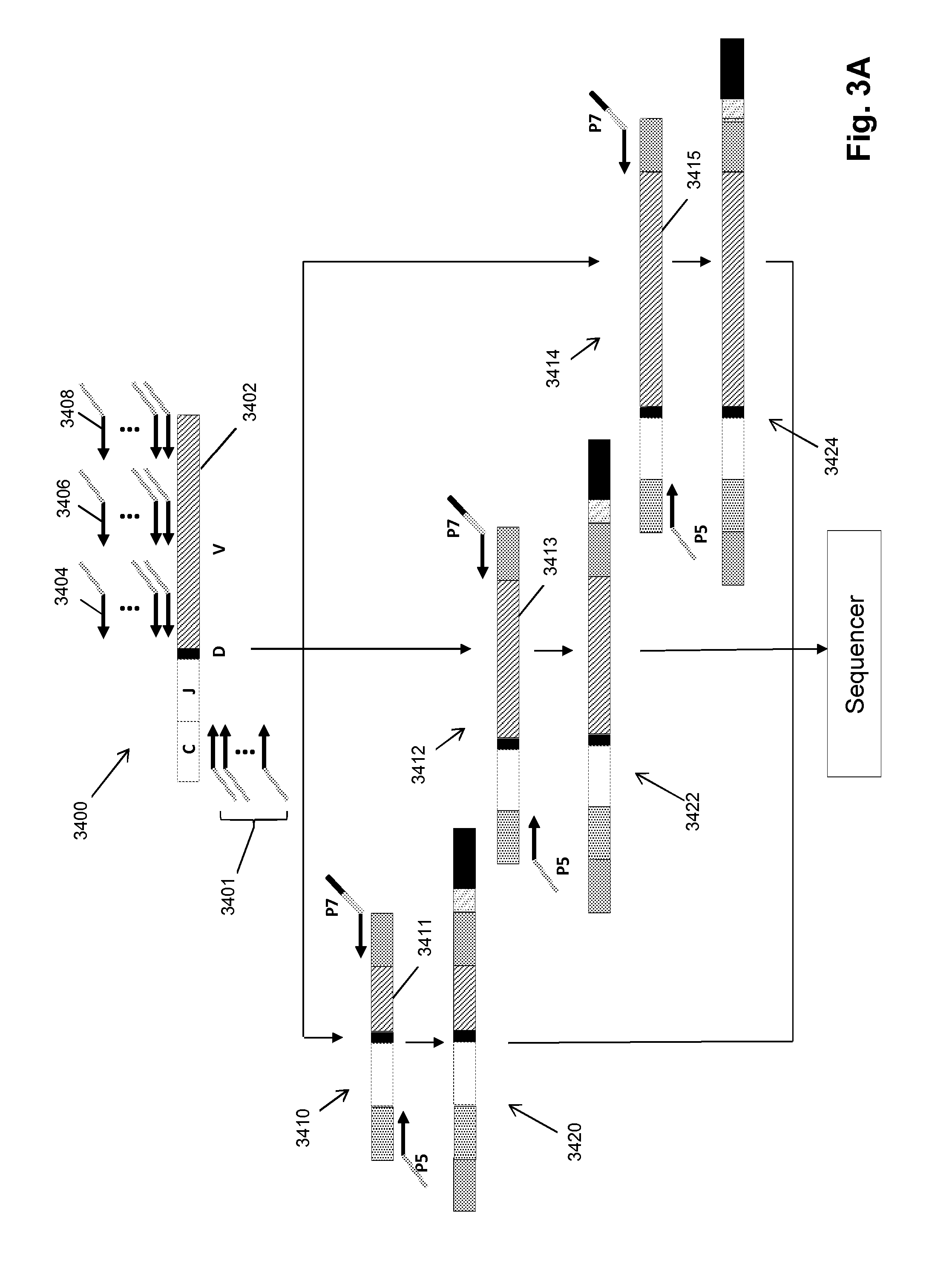Predicting relapse of chronic lymphocytic leukemia patients treated by allogeneic stem cell transplantation
a technology of allogeneic stem cells and chronic lymphocytic leukemia, which is applied in the field of predicting relapse of chronic lymphocytic leukemia patients treated by allogeneic stem cell transplantation, can solve problems such as difficult evaluation of patients, and achieve the effect of increasing the number of correlating clonotypes
- Summary
- Abstract
- Description
- Claims
- Application Information
AI Technical Summary
Benefits of technology
Problems solved by technology
Method used
Image
Examples
example
Prediction of CLL Patient Relapse After Allogeneic Stem Cell Transplantation
[0053]In this Example measurements were taken over a two-year period on a cohort of 42 CLL patients that received conventional allogeneic SCT treatment. The predictive rules of the invention were derived from data from these patients shown below and in FIG. 4. below means that a recurrence or relapse was never predicted in the patient. Except for missing patient F, relapse was predicted by the rules of the invention in every case. Relapses were predicted almost 8 months (7.75 months) in advance for all the cases, with an average of a year (364 days).
RelapseTime of FirstPatient(0 = no, 1 = yes)Prediction of RelapseB0C0CD0D0E1248F1H1559J1233K0KL0N0NO0P1355PQ0R1390T1435V0W0X1331Y0
[0054]While the present invention has been described with reference to several particular example embodiments, those skilled in the art will recognize that many changes may be made thereto without departing from the spirit and scope o...
PUM
| Property | Measurement | Unit |
|---|---|---|
| Time | aaaaa | aaaaa |
| Time | aaaaa | aaaaa |
| Time | aaaaa | aaaaa |
Abstract
Description
Claims
Application Information
 Login to View More
Login to View More - R&D
- Intellectual Property
- Life Sciences
- Materials
- Tech Scout
- Unparalleled Data Quality
- Higher Quality Content
- 60% Fewer Hallucinations
Browse by: Latest US Patents, China's latest patents, Technical Efficacy Thesaurus, Application Domain, Technology Topic, Popular Technical Reports.
© 2025 PatSnap. All rights reserved.Legal|Privacy policy|Modern Slavery Act Transparency Statement|Sitemap|About US| Contact US: help@patsnap.com



